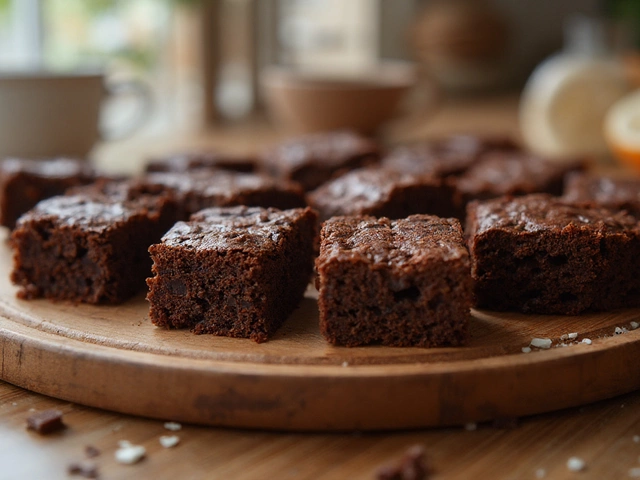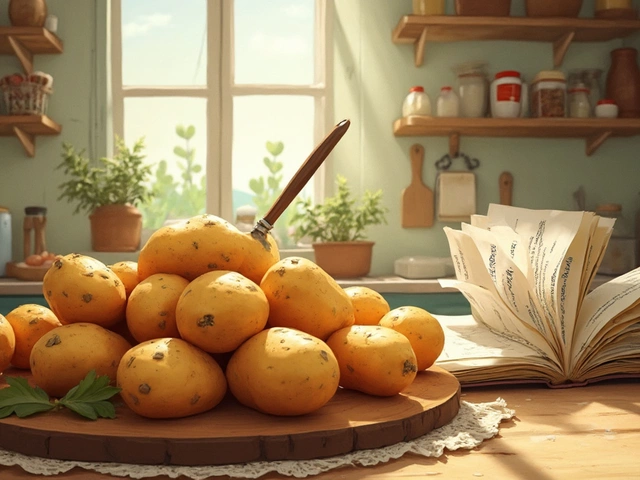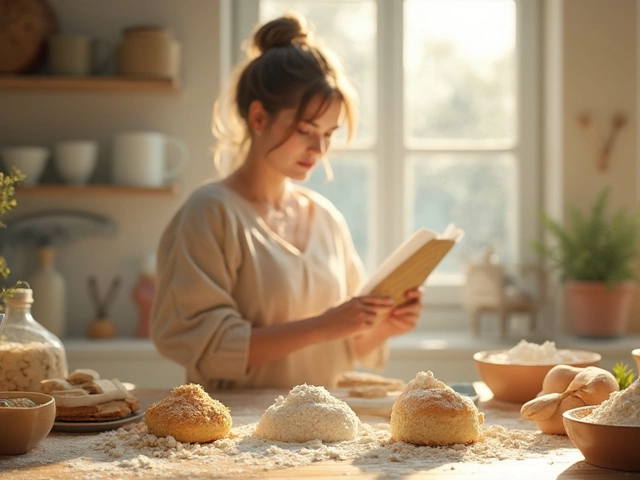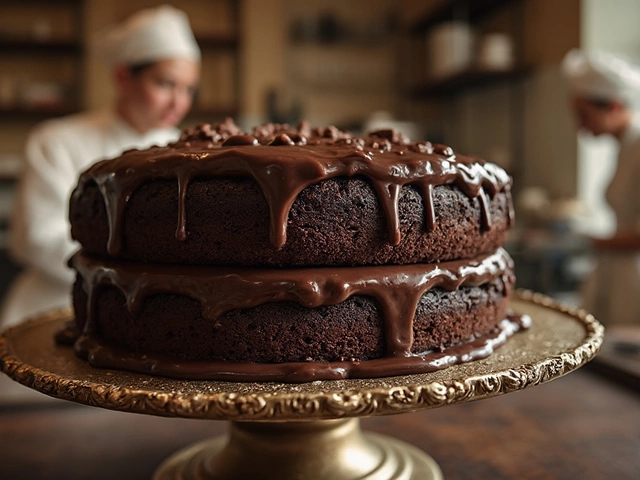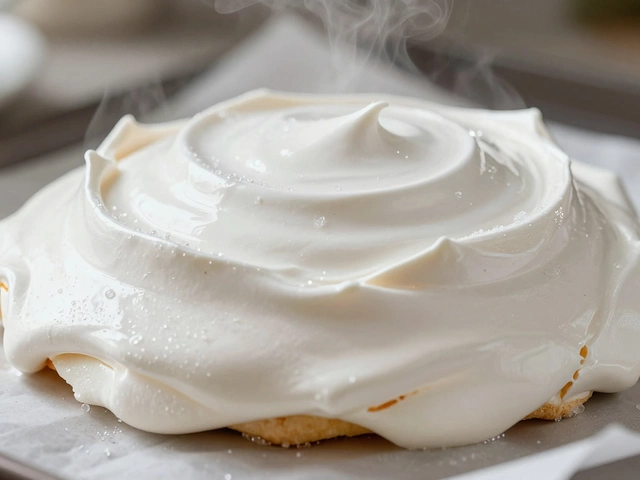
When you think of Brazil, your mind might first wander to samba, beaches, or even coffee. But if you've got a sweet tooth, there's a treat that's making waves across the country: macarons. These delicate, colorful confections have become a beloved part of the dessert scene in Brazil, blending the classic French pastry with a uniquely Brazilian twist.
You might be wondering, how did these little bites of heaven find their way to Brazil? Well, it started with the rise of gourmet patisseries eager to introduce international flavors to curious locals. Macarons quickly became one of those 'must-try' items, partly because of their vibrant colors and intricate flavors that mirror Brazil's lively culture.
What's fascinating is how Brazilian chefs have embraced the macaron while adding their spin. It's common to find traditional flavors like pistachio and raspberry, but don't be surprised to encounter Brazilian-inspired versions featuring maracujá (passion fruit), cocada (coconut), or even brigadeiro (a beloved Brazilian chocolate treat). Each bite offers a story of cultural fusion, making the macaron experience in Brazil truly unique.
- Macarons in Brazilian Culture
- Popular Brazilian Flavors
- Best Places to Find Macarons
- Tips for Making Macarons at Home
Macarons in Brazilian Culture
Macarons might hail from France, but they're finding a new home in Brazil's culinary landscape. Over the past decade, these colorful pastries have become increasingly popular, especially in cities like São Paulo and Rio de Janeiro. Brazil's vibrant culture perfectly complements the visual and flavorful appeal of macarons, making them a hit with both locals and tourists.
How Macarons Became Popular
It all started in the late 2010s when Brazilian patisseries began experimenting with international desserts. As the country's middle class expanded, so did the demand for gourmet treats. Macarons quickly became a symbol of this new culinary trend, standing out with their unique textures and enticing colors.
Adding to their appeal, Brazilian chefs began infusing local flavors into their creations. Traditional options like vanilla and chocolate are joined by exotic twists such as açaí and passion fruit, which resonate with the Brazilian palate. These local spins not only delighted taste buds but also celebrated Brazil's rich fruit diversity.
Integrating Macarons Into Local Events
Interestingly, macarons have also made their way into Brazilian celebrations. Whether it's weddings, birthday parties, or corporate events, these sweet treats are often featured in dessert tables, providing a touch of elegance and fun. It's not uncommon to see them color-coordinated with the event theme, showcasing their versatility.
The Rise of Macaron Workshops and Classes
With the growing interest in making these desserts at home, macaron-making workshops are popping up everywhere. Enthusiasts looking to master the art of the perfect macaron can find classes in major cities, taught by experienced pastry chefs. These workshops occasionally incorporate Brazilian elements, such as pairing with a traditional cup of Brazilian coffee, adding more flair to the experience.
In short, macarons in Brazil aren't just a dessert; they're part of a cultural exchange that brings together the best of both worlds. They symbolize not only culinary creativity but also the ever-evolving landscape of Brazilian gastronomy.
Popular Brazilian Flavors
Brazil’s rich culinary tradition offers a treasure trove of ingredients that have found their way into these delightful macarons. If you’ve had macaroons elsewhere, you're in for a treat with these Brazilian twists. Instead of just sticking to the classic French varieties, Brazilian chefs have turned local flavors into the 'new norm.' Let's dig into some popular ones you might want to try.
Maracujá (Passion Fruit)
This tropical fruit is a Brazilian favorite, known for its refreshing and slightly tart flavor. When used in macarons, it brings a burst of zing that complements the sweetness perfectly. It's like having a bite of summer with every chew.
Brigadeiro
Inspired by Brazil’s much-loved chocolate treat, the Brigadeiro macaron is a chocolate lover's dream. Made with cocoa and sweetened condensed milk, it captures that rich, creamy texture of the classic Brigadeiro dessert. Plus points for authenticity!
Cocada (Coconut)
Coconut is a staple in Brazilian desserts, and it appears wonderfully in the Cocada macaron. Made with shredded coconut, it has a sweet, nutty taste with a touch of creamy surprise, perfect for anyone who loves a coconut kick.
Açaí
Known worldwide as a superfood, açaí makes its mark in macaron form with its unique, earthy taste. These macarons are not only delicious but also packed with a little extra goodness, thanks to the antioxidants from the açaí.
| Flavor | Description |
|---|---|
| Maracujá | Tart and refreshing |
| Brigadeiro | Rich chocolate |
| Cocada | Sweet coconut |
| Açaí | Earthy superfood |
Exploring these flavors shows that in Brazil, macarons are more than just sweets; they're a testament to how food evolves by embracing local culture. So, when you’re next in Brazil, skip the usual and go for these amazing local flavors. You won't regret it!
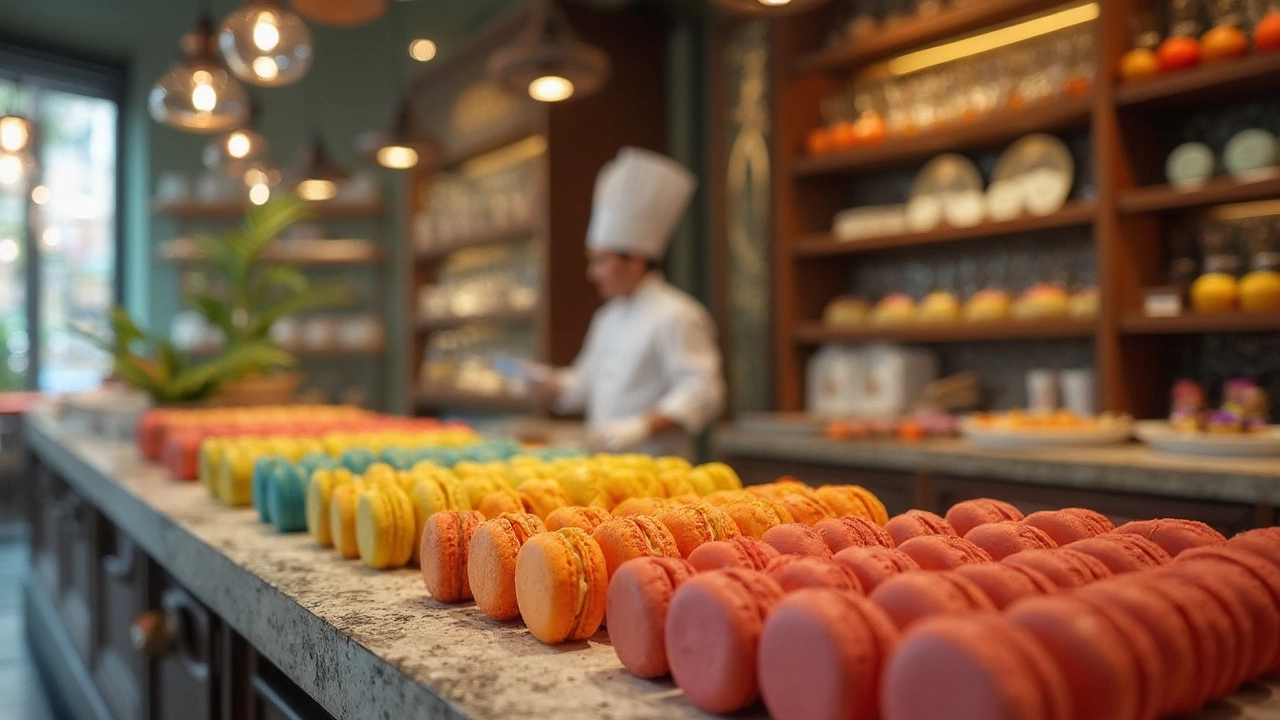
Best Places to Find Macarons
Exploring Brazil and craving some mouthwatering macarons? You’re in luck because they’re popping up in all corners of the country’s vibrant cities. From cozy cafes to high-end patisseries, here’s where you can find the best macarons across Brazil.
São Paulo’s Gourmet Gems
The bustling city of São Paulo is a haven for food enthusiasts. The city’s cosmopolitan vibe is reflected in its pastries, and macarons are no exception. Confeitaria Dama stands out, known for its inventive flavors and perfect texture. It’s a bit on the posh side, but worth every penny for that authentic macaron experience.
Another must-visit is the delightful Le Vin Boulangerie, a place that transports you straight to Paris. Their macarons are consistently praised for both taste and presentation.
Rio de Janeiro’s Sweet Retreats
In Rio, look no further than L’Atelier du Cuisinier in the centro. They serve not just amazing macarons but a full French culinary experience. The café’s mix of elegance and warmth makes it a perfect spot to indulge.
For a more local flavor, try Confeitaria Colombo. While known for its historical charm and vast dessert selection, the macarons here are a delightful surprise, often featuring Brazilian-inspired flavors like guava.
Unique Flavors in Belo Horizonte
Belo Horizonte might be a bit off the beaten path, but this city knows its desserts. La Parisserie is an incredible spot if you want to taste how Brazilian ingredients mesh with traditional macaron flavors. Think passion fruit and brigadeiro that pack a punch!
Finding Macarons Beyond the Big Cities
If you’re outside major urban areas, fear not! Macarons are becoming increasingly popular in smaller towns, too. Check out local coffee shops and artisan bakeries where you're staying. You just might stumble upon a hidden gem.
In recent years, there’s also been a rise in online stores delivering these delightful confections throughout Brazil. Websites like Macaron Lovers let you order a colorful box to be delivered right to your doorstep, perfect if you want to enjoy some sweet treats without the travel.
Tips for Making Macarons at Home
Ready to bring the delightful world of macarons into your kitchen? Making these delicate treats at home can seem daunting, but with the right approach, you'll be enjoying freshly made macarons in no time. Here are some practical tips to get you started on your macaron-making journey.
Gather Your Ingredients
First things first, the quality of your ingredients matters. Be sure to use almond flour, not almond meal, for a smooth finish. You'll also need powdered sugar, granulated sugar, egg whites, and food coloring if you'd like to add a pop of color.
The Importance of Technique
- Measure Precisely: Use a kitchen scale for accuracy. Even slight deviations can affect your results.
- Eegg Whites at Room Temperature: Leave them out for a bit before whipping to get the perfect texture.
- Macaronage: This is a crucial step. Gently fold your egg whites into the dry ingredients until you achieve the desired consistency, often described as 'lava-like.'
Baking and Filling
- Preheat and Parchment: Use parchment paper on your baking sheet and preheat your oven to around 150°C (302°F).
- Let Them Rest: After piping, let your macarons sit until they form a skin on top. This usually takes 20-30 minutes.
- Creative Fillings: This is your chance to experiment. From classic ganache to Brazilian influences like a passion fruit or brigadeiro center, the choice is yours!
There you go—your guide to making perfect macarons at home! Remember, practice makes perfect, so don't get discouraged if your first batch isn't flawless. They're tricky little treats but oh-so-rewarding when you get it right.

